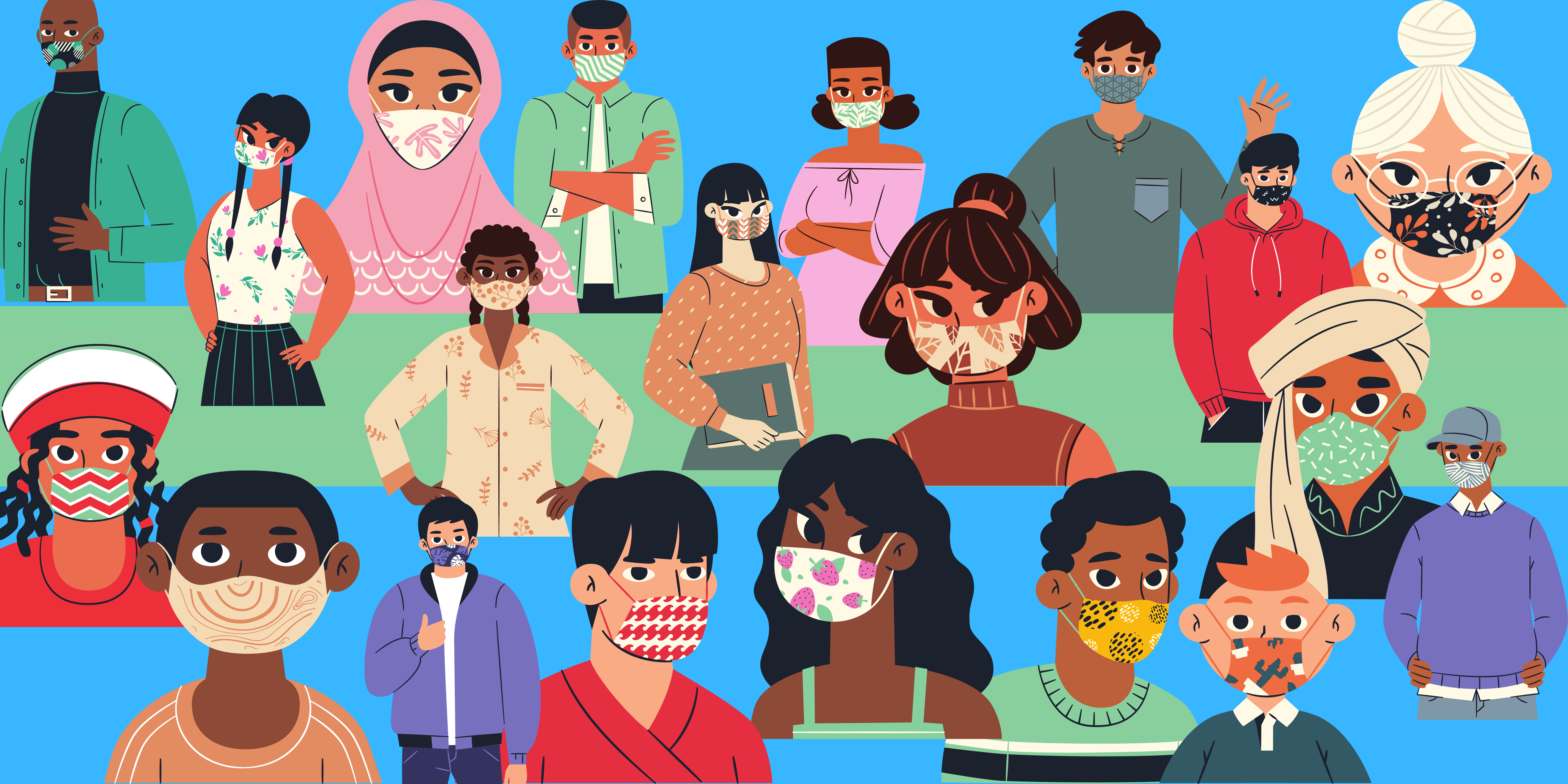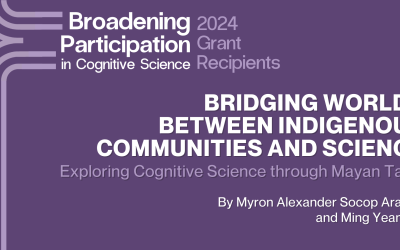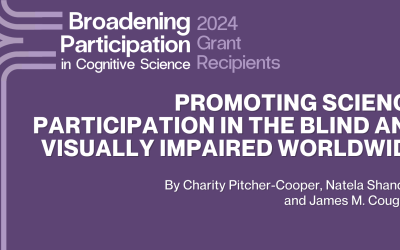By Keri Carvalho
Ask any researcher who studies racial health disparities, and they will tell you that even before COVID-19, we were already in a public health crisis. Black Americans were already disproportionately affected by chronic health conditions, including cardiovascular disease, obesity, and cancer (Graham, 2015; Krueger & Reither, 2015; O’Keefe, Meltzer, & Bethea, 2015).
Although the pandemic continues to evolve with recent increases in cases across all fifty states, the statistics have been abundantly clear from the start that disparities are exacerbated for Black individuals as cases and deaths are disproportionately high compared to white individuals. The Centers for Disease Control and Prevention (CDC) reports that Black individuals are 2.8 times more likely to contract COVID-19 (CDC, 2020). Furthermore, Black individuals with COVID-19 face 2.1 times higher odds of dying as a result of this illness than their white counterparts (CDC, 2020). Racial health disparities are particularly severe in a number of states. For instance, in Pennsylvania, Black individuals make up 11% of the population, but account for 21% of COVID cases (Kaiser Family Foundation, 2020).
The fact that communities of color have higher rates of chronic underlying conditions is clearly one key piece of the puzzle as to why such disparities exist. However, while differences in rates of comorbidities can help to explain mortality disparities, they do not explain the disproportional rate of COVID cases in the Black population.
There are of course socioeconomic factors to consider. Communities of color continue to have higher rates of poverty, with many individuals living in smaller spaces with more people, and not having the option to work from home during the pandemic. Having to commute to work using public transport and working near and around others translates into higher risk for exposure. Certainly, all of these factors contribute to racial health disparities we see in COVID cases, but one overlooked contributor that could be factoring into the differences we see between white communities and communities of color is stress.
While national reports show sweeping increases in stress across the United States population, it is likely that people of color are most impacted. Even before the pandemic, people of color reported a wide range of ubiquitous stressors that can negatively affect health outcomes, such as financial strain (Savoy et al., 2015). Of course, perhaps the greatest difference in experiences of stress between people of color and white individuals in the United States is the experience of racial discrimination.
Indeed, research provides evidence of the connection between discrimination and negative health outcomes. Individuals who report higher levels of internalized discrimination, which is ascribing and internally confirming stereotypes to oneself, are shown to be at greater risk for cardiovascular disease, hypertension, and some cancers (DeLilly & Flaskerud, 2012). Discrimination is also associated with increased inflammation, which can put individuals at greater risk for chronic disease (Cuevas et al., 2020). Further evidence indicates that DNA telomere length, an indicator of physiological aging, is prematurely shortened in Black individuals, and that greater discrimination is associated with shortened telomere length (Chae et al., 2020; Lee, Kim, & Niblett, 2017). That is, the impact of discrimination is so great that it is resulting in rapidly aging individuals, which ultimately means greater risk for disease and shorter life span. This may translate to greater risk for mortality due to COVID-19 in people of color, as older individuals are a high-risk population.
The link between discrimination and health is multifaceted and requires consideration of many factors. However, at its most basic level, discrimination is a psychosocial stressor and therefore, the body responds in the same way that it does to other forms of stress. When a stressful situation arises, the brain initiates the hypothalamic-pituitary-adrenal (HPA) axis, which in turn results in an increased release of stress hormones, including cortisol. When an individual experiences consistent and frequent stressors, their body will have continuously high cortisol levels. Experiencing chronic stress can be detrimental to health as an individual’s body can begin to experience wear and tear (i.e. high allostatic load). As a result, individuals can have significantly higher risk for deleterious health consequences, including weight gain, hypertension and cardiovascular disease (Dar et al., 2019; Liu, Li, Li, & Khan, 2017; Tomiyama, 2019).
There are also other pathways by which racial discrimination can result in adverse mental and physical health outcomes. Aside from the physical wear and tear resulting from the chronic stress of discrimination, behavioral responses to stress can lead to engaging in poor health behaviors and choices (Tomiyama, 2019). Such behaviors may include unhealthy eating, smoking, and substance abuse. In turn, these behaviors can also increase risk for disease and poor health outcomes over time.
For Black Americans, racial discrimination can easily become a chronic stressor as it can be encountered in almost every facet of life, creating a wholly pervasive experience. Racial discrimination operates at every level in the United States, including institutional and interpersonal forms. Importantly during this pandemic, impacts of systemic racial discrimination can be seen in lack of access to healthcare and COVID-19 testing for Black Americans (Egede & Walker, 2020). In addition, perceived discrimination from healthcare providers can affect patient-provider relationships, which in turn affects treatment and mortality rates for Black Americans (Shavers et al., 2012; Stepanikova & Oates, 2017).
With recognition of racial health disparities going from bad to worse in the United States during the pandemic, there are massive opportunities for all scientists, elected officials, and policymakers to make a real difference. For psychologists in particular, there is the opportunity to understand the complexities of racial disparities in psychosocial stress and how this may affect health outcomes over time. Of course, we must all be vocal activists for change, as the pandemic shows no sign of slowing down, and people of color continue to make up a disproportionate total of cases and mortalities each day.
References
CDC (2020). COVID-19 Hospitalization and Death by Race/Ethnicity. Retrieved November 1, 2020, from https://www.cdc.gov/coronavirus/2019-ncov/covid-data/investigations-discovery/hospitalization-death-by-race-ethnicity.html
Chae, D. H., Wang, Y., Martz, C. D., Slopen, N., Yip, T., Adler, N. E., Fuller-Rowell, T.
E., Lin, J., Matthews, K. A., Brody, G. H., Spears, E. C., Puterman, E., & Epel, E. S. (2020). Racial discrimination and telomere shortening among African Americans: The Coronary Artery Risk Development in Young Adults (CARDIA) Study. Health psychology : official journal of the Division of Health Psychology, American Psychological Association, 39(3), 209–219. https://doi.org/10.1037/hea0000832
Cuevas, A. G., Ong, A. D., Carvalho, K., Ho, T., Chan, S., Allen, J. D., Chen, R., Rodgers, J.,
Biba, U., & Williams, D. R. (2020). Discrimination and systemic inflammation: A critical review and synthesis. Brain, behavior, and immunity, 89, 465–479. https://doi.org/10.1016/j.bbi.2020.07.017
Dar, T., Radfar, A., Abohashem, S., Pitman, R. K., Tawakol, A., & Osborne, M. T. (2019).
Psychosocial stress and cardiovascular disease. Current treatment options in cardiovascular medicine, 21(5), 23. https://doi-org.ezp-prod1.hul.harvard.edu/10.1007/s11936-019-0724-5
DeLilly, C. R., & Flaskerud, J. H. (2012). Discrimination and health outcomes. Issues in mental
health nursing, 33(11), 801–804. https://doi.org/10.3109/01612840.2012.671442
Egede, L. E., & Walker, R. J. (2020). Structural racism, social risk factors, and Covid-19—A
dangerous convergence for Black Americans. New England Journal of Medicine, 383(12), e77. doi: 10.1056/NEJMp2023616
Graham G. (2015). Disparities in cardiovascular disease risk in the United States. Current
cardiology reviews, 11(3), 238–245. https://doi.org/10.2174/1573403×11666141122220003
Kaiser Family Foundation. (2020). COVID-19 Cases by Race/Ethnicity. Retrieved November 1, 2020, from https://www.kff.org/other/state-indicator/covid-19-cases-by-race-ethnicity/?currentTimeframe=0
Krueger, P. M., & Reither, E. N. (2015). Mind the gap: race/ethnic and socioeconomic disparities in obesity. Current diabetes reports, 15(11), 95. https://doi.org/10.1007/s11892-015-0666-6
Lee, D. B., Kim, E. S., & Neblett, E. W., Jr. (2017). The link between discrimination and telomere length in African American adults. Health Psychology, 36(5), 458–467. https://doi.org/10.1037/hea0000450
Liu, M. Y., Li, N., Li, W. A., & Khan, H. (2017). Association between psychosocial stress and hypertension: a systematic review and meta-analysis. Neurological research, 39(6), 573-580. https://doi-org.ezproxy.library.tufts.edu/10.1080/01616412.2017.1317904
O’Keefe, E. B., Meltzer, J. P., & Bethea, T. N. (2015). Health disparities and cancer: racial disparities in cancer mortality in the United States, 2000–2010. Frontiers in public health, 3, https://doi.org/10.3389/fpubh.2015.00051
Savoy, E. J., Reitzel, L. R., Nguyen, N., Advani, P. S., Fisher, F. D., Wetter, D. W., Cuevas, A. G., & McNeill, L. H. (2014). Financial strain and self-rated health among Black adults. American journal of health behavior, 38(3), 340–350. https://doi.org/10.5993/AJHB.38.3.3
Shavers, V. L., Fagan, P., Jones, D., Klein, W. M., Boyington, J., Moten, C., & Rorie, E. (2012). The state of research on racial/ethnic discrimination in the receipt of health care. American journal of public health, 102(5), 953-966.
Stepanikova, I., & Oates, G. R. (2017). Perceived discrimination and privilege in health care: the
role of socioeconomic status and race. American journal of preventive medicine, 52(1), S86-S94.
Tomiyama, A. J. (2019). Stress and obesity. Annual review of psychology, 70, 703-718.
https://doi-org.ezproxy.library.tufts.edu/10.1146/annurev-psych-010418-102936



